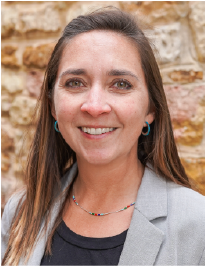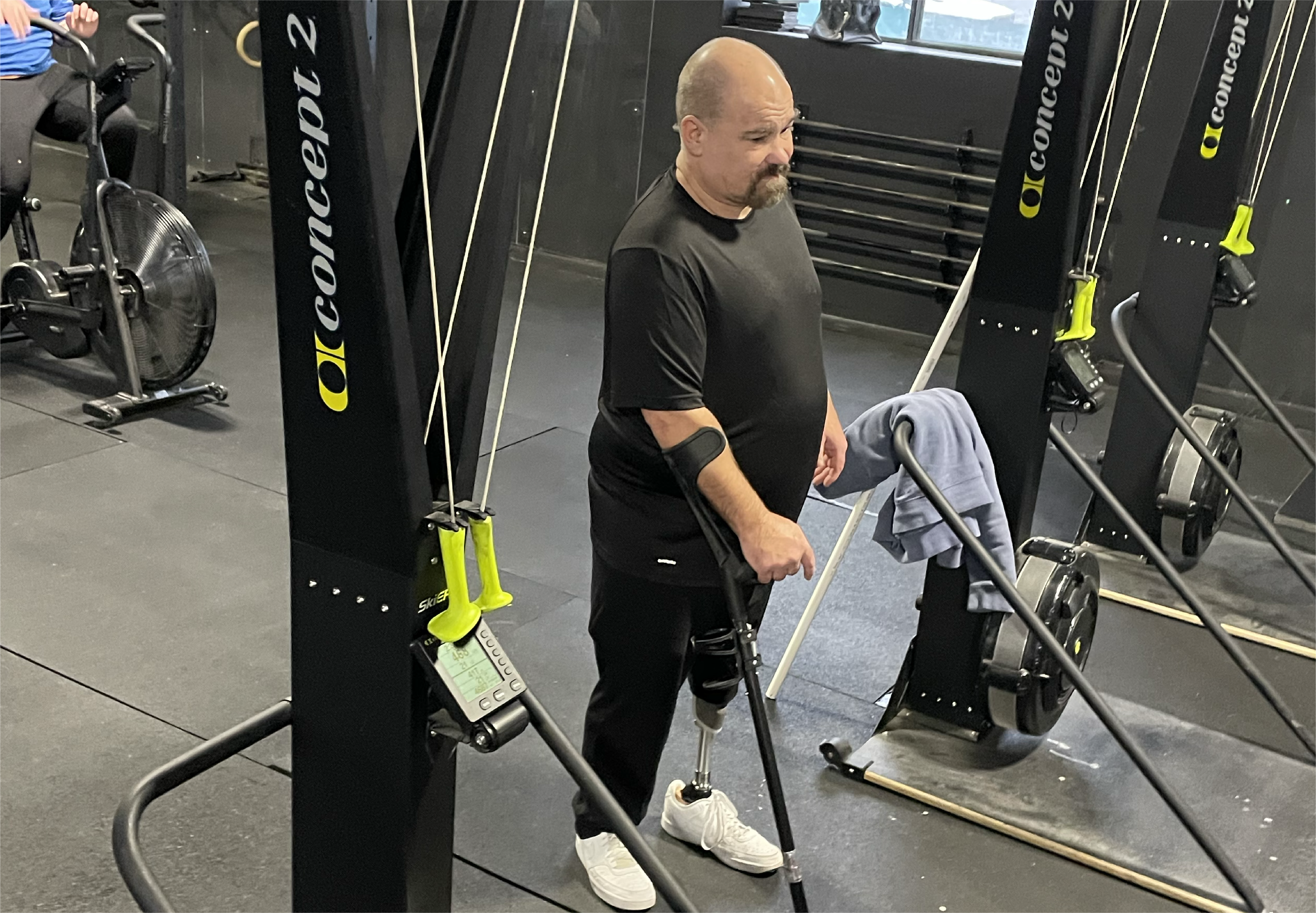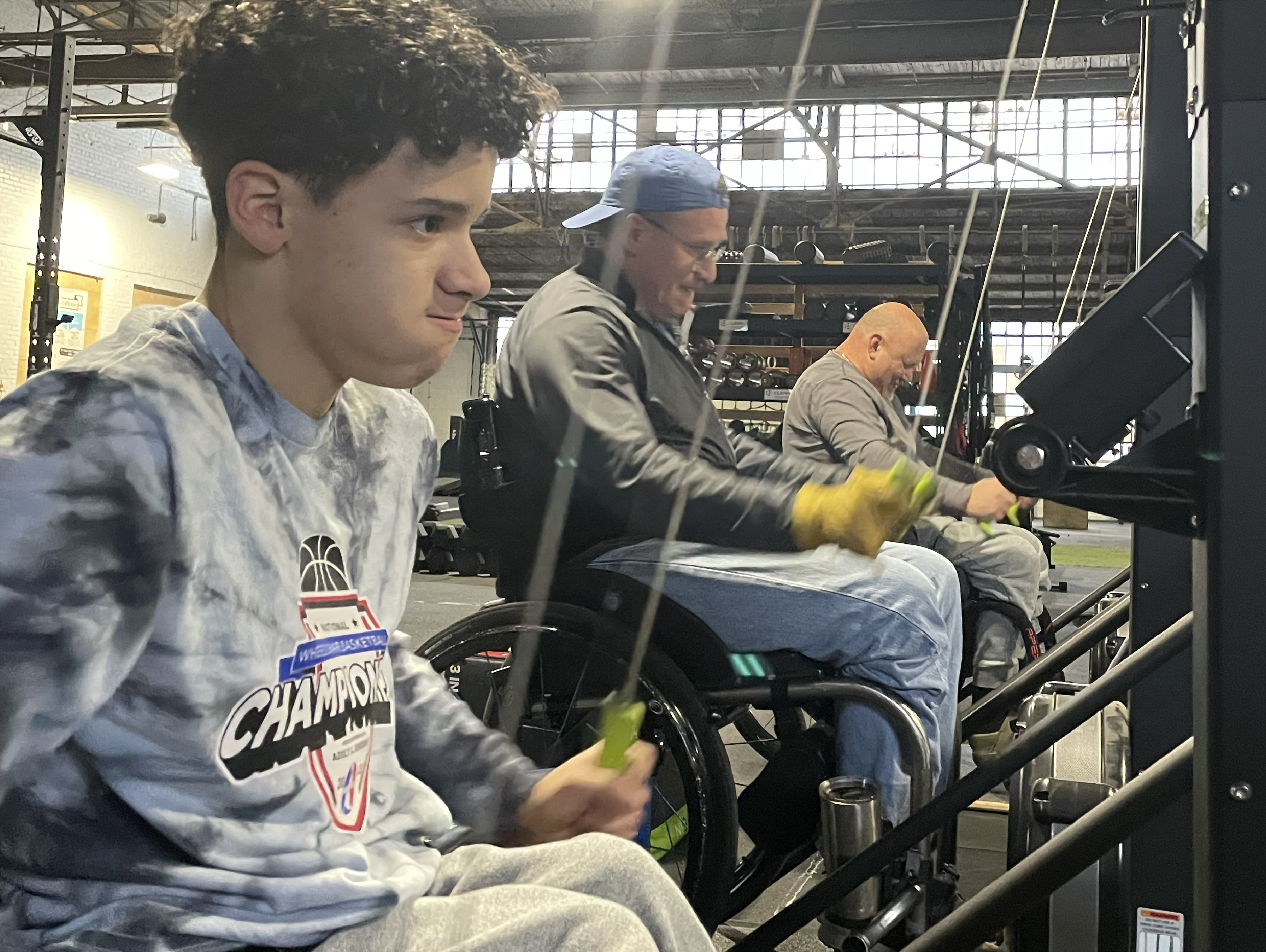Life Span Institute research explores impact of adaptive exercise for people with disabilities
Brian McMillan, 65, attends fitness classes four times a week in the Adaptive Athletes In Motion program, which was developed for people with mobility disabilities. “You need strength to get through life,” he said.

McMillan and each of the other “adaptive athletes,” as they are known, ages 14 to 73, participating in the class have a physical condition that challenges their mobility, from ataxia to multiple sclerosis to spinal cord damage.
Known as high-intensity functional training, or HIFT, the community-based program is akin to CrossFit. It also is the focus of studies undertaken by University of Kansas researcher Lyndsie Koon, associate director of the Research and Training Center on Independent Living at the KU Life Span Institute.
McMillan took a break from using the ski ergometer machine at Brave Enough CrossFit in North Kansas City, Mo., and explained how he depends on exercising his arms and torso to get his heart rate up and stay physically engaged, even without the use of his legs.
“Sitting in this chair for 21 years ... we lose our stomach muscles,” he said. “So, if you're not burning extra calories, you're just eating.”
People with mobility disabilities are 66% more likely to be overweight or obese than their nondisabled peers, and they are at higher risk of cardiovascular diseases, depression and anxiety. Fewer than half of adults with a mobility disability are physically active, despite evidence that exercise improves health and well-being.
Koon said that community-based exercise programs for health interventions are both understudied and overlooked by physicians, who are more likely to suggest surgery or pharmacological treatment than exercise for people with disabilities.

“We have almost no empirical evidence on the effects of this type of exercise (HIFT) for people with disabilities, yet people with disabilities are actively engaging in HIFT in communities across the country and worldwide,” Koon said.
Koon is leading three pilot projects assessing the effectiveness of HIFT to improve various health outcomes, including fall risk, metabolic health, strength, flexibility, quality of life, psychosocial health and more. Her work has been supported internally through a KU Research GO award that concludes in April. Additionally, she has been awarded support through the Kansas Center for Metabolism and Obesity Research, which is funded by the National Institutes of Health Centers of Biomedical Research Excellence, and the Landon Center on Aging, both at the KU Medical Center.
“Maintaining functional independence for people with mobility disability, including those aging with long-term disability, is extremely important to me and the entire goal of my work,” she said. “I care that people can get up off the ground if they fall, get down on the ground to play with their children or grandchildren, or carry their groceries into the house independently, and have a community of people supporting them in their health endeavors."
Despite the benefits of exercise on brain health, helping manage weight, reducing the risk of disease, strengthening bones and muscles and improving the ability to do everyday activities, most community-based facilities are not accessible, or even inclusive, to people with physical disabilities, Koon said.
Moreover, while outpatient physical and occupational therapy can provide temporary benefits for people with disabilities these services are typically prescribed after an injury and are often short-term with limitations on the total number of visits. They are not a long-term strategy for activity engagement.

Developed by Josh Snyder, the HIFT program in KC, known as Adaptive Athletes In Motion (AAIM), offers opportunities to individuals at several area locations, including the Mission Barbell Club in Mission, the Kansas Athletic Club in Overland Park, FITNKC in Kansas City, Mo., and Kaw Valley CrossFit in Lawrence.
“Josh has a knack for this stuff,” Koon said. “He can take any disability type and build a program based on their capabilities and personal goals.”
Trainers work individually with new athletes in onboarding sessions after reviewing health concerns, movement limitations and health goals, Koon said.
After McMillan lost mobility of his legs in a motorcycle accident, he worked with a therapist to learn how to get dressed, move around and take care of himself.
“But that only lasts for so long, and then, after that, you’re just kind of on your own,” McMillan said.
In the AAIM program, he said every day they do something different to keep their muscles, and mind, engaged.
Daniel Bufford, 53, of Merriam, said he gained about 50 pounds after he lost his leg in 2022. Originally from the Dallas area, he moved to get fresh start after a Kansas City-area nonprofit, Steps of Faith, offered to pay a prosthetic limb.
He started with AAIM last spring and now attends several classes a week, sometimes even filling in as volunteer coach. He said if he doesn’t work out, he gets depressed.
“This really changed me,” Bufford said. “Now I'm competitive. I've done CrossFit competitions — I've done one so far, but I'm signed up to do a bunch right now.”
The added benefit of the fitness class is the community support and connections they make. For Bufford, this has helped give him a sense of purpose as well.
“One of my friends I work out with, he's a triple amputee,” Bufford said. “He's just got one arm, and we throw jokes back and forth a lot. And you'll find that a lot (of us) are like that. Because if we can't make fun of ourselves, then we're never going be able to handle it with other people.”

Koon said that HIFT incorporates functional movement to support daily activities such as picking up objects from seated positions, transferring, reaching overhead, getting off the floor, or ambulating without supports. But another benefit of HIFT classes for people with disabilities is that such programs are widespread throughout the country, and internationally, making them within reach of many people who have disabilities.
“The best part is that our research is that participants have the option to stay in the program after the conclusion of the intervention,” she said.
So far, about 60%-70% of the participants opt to stay engaged in the AAIM program.
Koon said research is still in its early stages. However, her work is helping gather empirical evidence on program effects, grow the program in the greater Kansas City and Lawrence areas and increase its reach to new people in the community, as well as increase exposure to other HIFT programs that may be interested in starting their own adaptive classes.
“That's been incredibly rewarding to see,” she said.
If you are interested in participating in a study of functional fitness, visit this page to learn more.